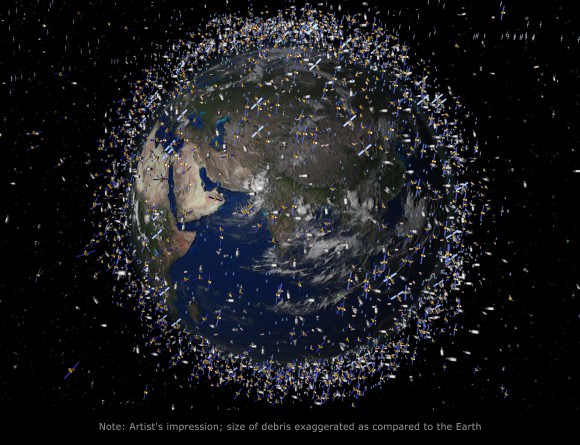What happens to a battery in a dead satellite? Despite nearly 60 years of sending these machines into space, this is a “relative blind spot” among designers, the European Space Agency says. And that’s a big problem, because there’s a chance that these power sources can rupture and cause debris — adding to the growing problem in orbit.
With NASA estimating more than 500,000 dead satellites and other debris cluttering up the environment around Earth, the risk of something smashing into an important space thing — a spacecraft, a GPS satellite, a weather monitor — increases. So space policy-makers are doing what they can to reduce the problem (while also creating methods to clean it up.)
A few satellite breakups in the ’90s were linked to battery failures, but ESA notes these were older, non-lithium types. To figure out what’s happened more recently, the agency wants to learn more about battery behavior after the satellite shuts down, and how to prevent a breakup from happening.
“As a satellite drifts freely, could batteries endure the harsh environment of orbit – including wild temperature swings, degradation of thermal control and components as well as radiation exposure – without leakage or bursting?” ESA asks.

For more information, go to the ESA tendering website and look for solicitation AO7840, called “Spacecraft Power System Passivation At End Of Mission.” The tender is valued between 200,000 and 500,000 Euros and closes April 23.
“The goal of the activity is to study and implement the most adequate means to achieve this power system passivation,” the tender states.
“This may involve the discharge and disconnection of the batteries and the disconnection of the solar arrays. This passivation needs to be reliable enough to avoid to deactivate the power system before the end of the mission. The proposed concept should be universal enough to be compatible with most space applications (but in priority European institutional market).”
Source: European Space Agency

